Diesel Engine Common Rail 101: Pressure, Precision, Performance
Why Diesel Engine Common Rail Technology Changed Everything
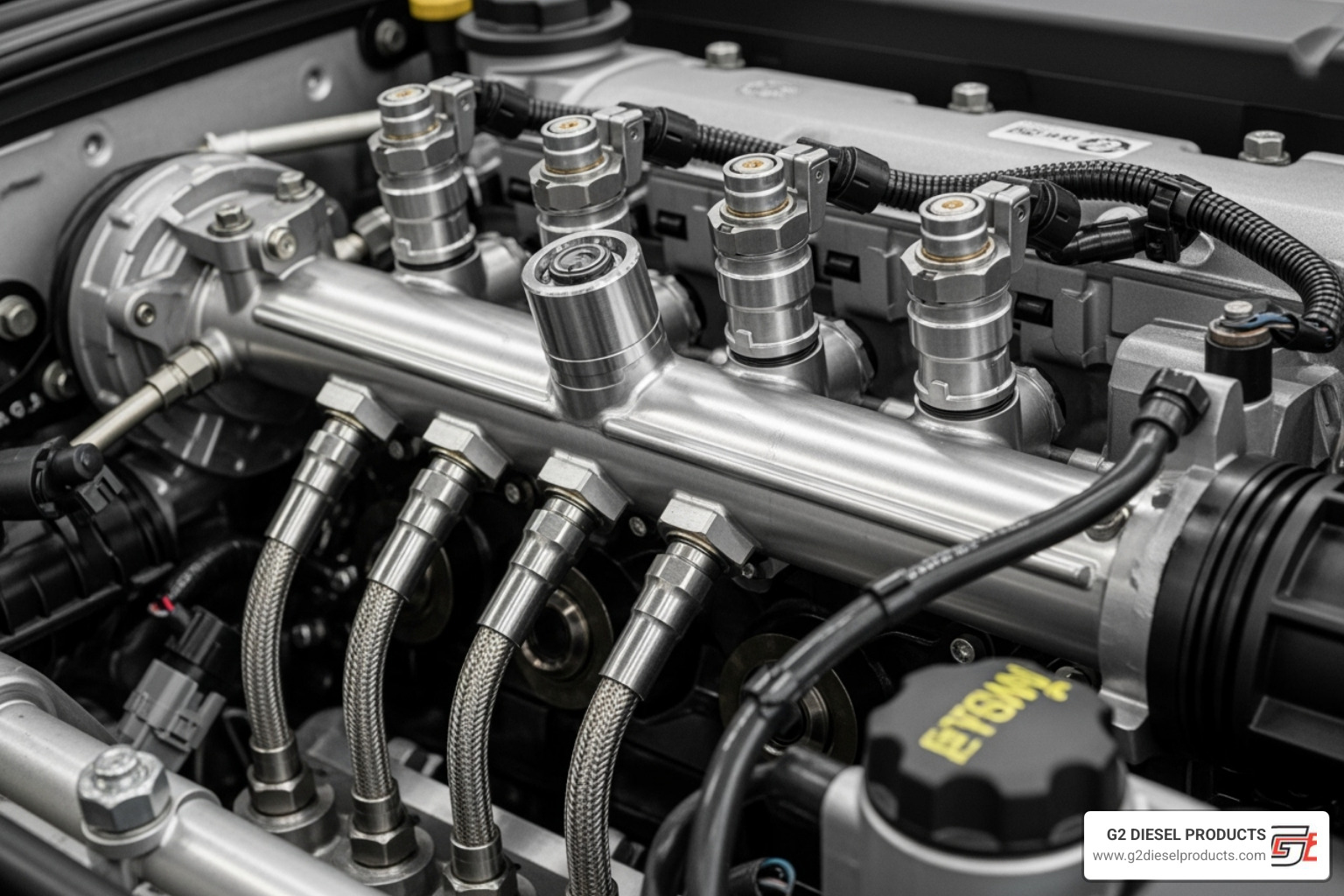
If Rudolf Diesel were alive today, he'd be amazed at how his 1890s invention has evolved. Modern diesel engine common rail systems represent the biggest leap in diesel technology since the engine's creation, changing noisy, smoke-belching machines into precise, powerful, and clean powerplants.
Driven by strict emissions regulations in the late 1990s, the industry shifted from mechanical to electronic control. Instead of each injector creating its own pressure, a common rail system stores fuel at a constant high pressure (up to 36,000 PSI) in a shared "rail." A computer then controls precisely when and how much fuel is injected, allowing for multiple injections per cycle. This results in up to 25% more torque, superior fuel efficiency, and significantly reduced emissions and noise.
For fleet managers, this technology means more reliable and efficient trucks. This guide will walk you through everything you need to know about common rail technology, from basic operation to the maintenance practices that keep your Volvo, Mack, Kenworth, and Paccar trucks running strong.
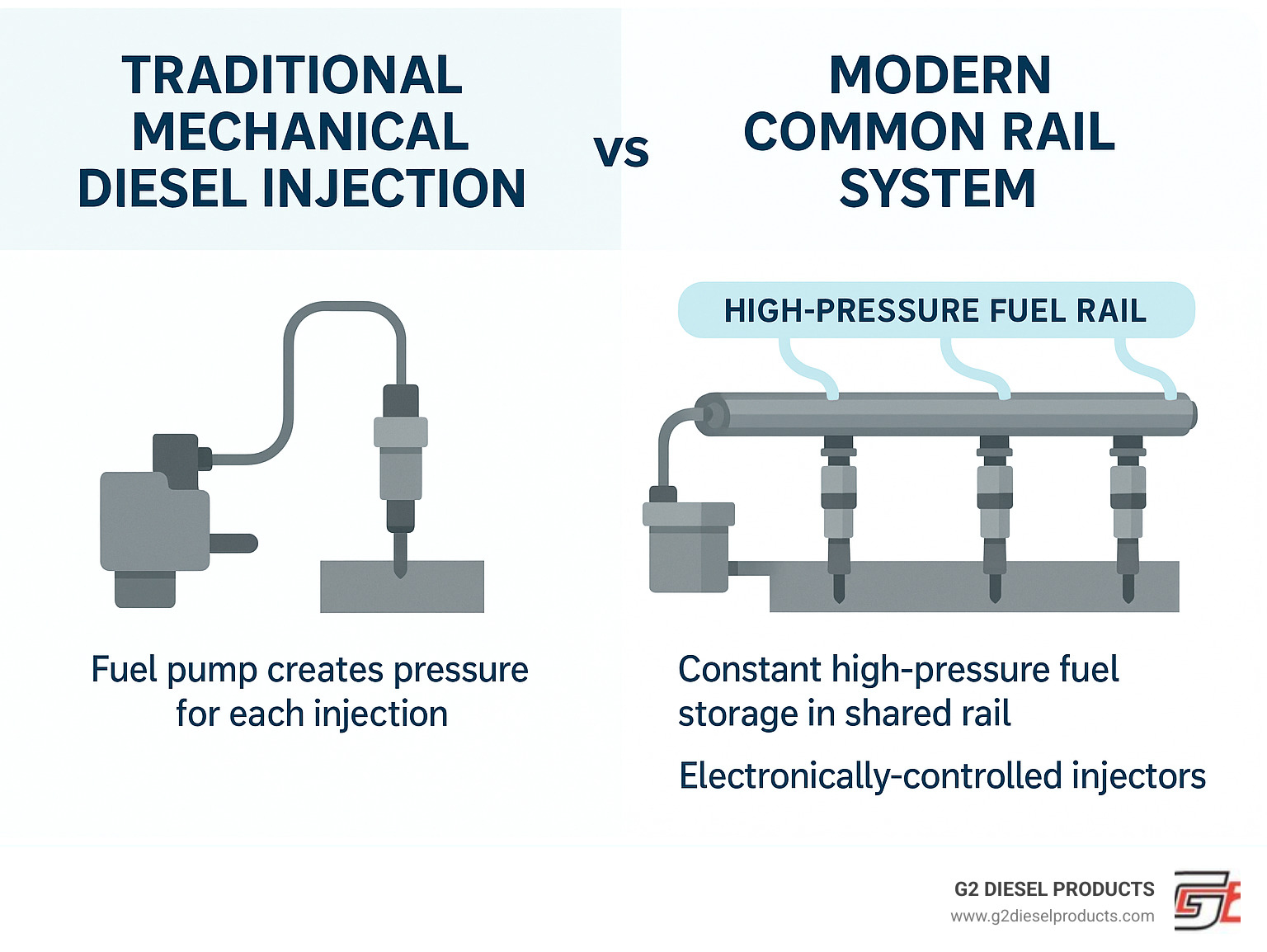
What is a Common Rail System and How Does It Fundamentally Work?
A diesel engine common rail system uses a high-pressure fuel accumulator—a thick-walled steel pipe or "rail"—to feed all the engine's injectors. This rail stores diesel fuel at incredibly high pressures of up to 36,000 PSI. This design separates pressure generation from the injection event, giving the Engine Control Unit (ECU) unprecedented electronic control over fuel delivery.
The Core Difference: Common Rail vs. Older Injection Systems
Older mechanical systems, like distributor pumps and unit injectors, were cam-driven. They generated pressure for each injection event, meaning injection pressure was dependent on engine speed. At low RPMs, pressure was weak, leading to poor fuel atomization, incomplete combustion, and the characteristic "diesel clatter."
Common rail systems changed this entirely. Fuel is continuously pressurized and stored in the rail, making high-pressure fuel available instantly, whether the engine is idling or at full power. This allows for consistent power, quieter operation, and cleaner combustion across the entire RPM range.
| Feature | Mechanical/Unit Injector Systems | Common Rail Diesel Systems |
|---|---|---|
| Pressure Control | Dependent on engine speed/load, generated per injection | Constant, high pressure in the rail, independent of engine speed |
| Injection Timing | Fixed, mechanically determined | Electronically controlled, highly flexible |
| Multiple Injections | Limited to one main injection | Multiple injections (pilot, main, post) possible per cycle |
| NVH (Noise, Vibration, Harshness) | Higher noise levels, more vibration | Significantly reduced, smoother operation |
The Key Components and Their Functions
A common rail system is a team of high-precision components working in harmony.
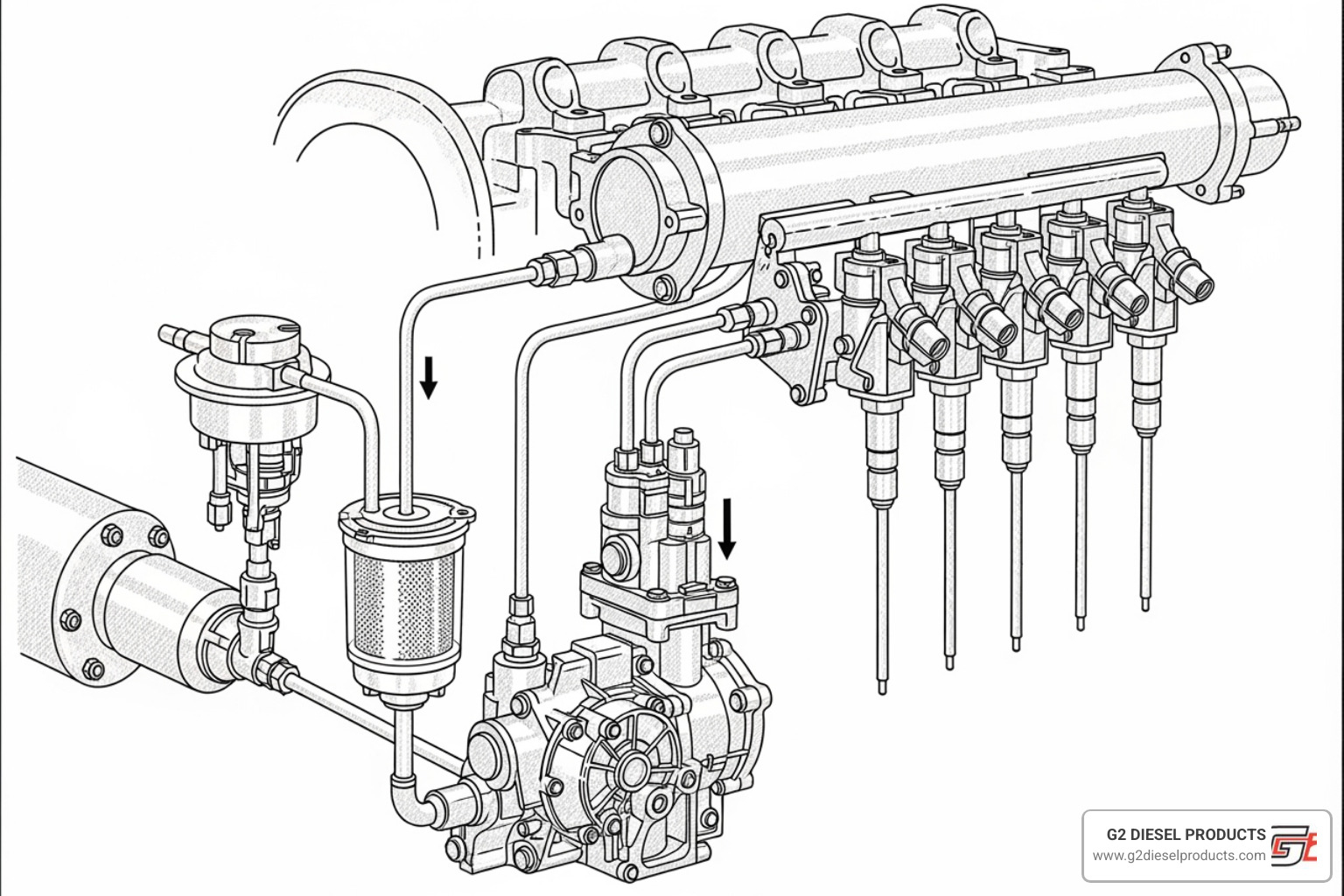
- Low-Pressure Fuel Pump: Draws fuel from the tank and supplies it to the high-pressure pump.
- Fuel Filter: A critical component that removes microscopic contaminants to protect the system's tight tolerances.
- High-Pressure Pump: The heart of the system, compressing fuel to extreme pressures (up to 36,000 PSI) and feeding it to the rail.
- Fuel Rail: A high-strength steel pipe that acts as a pressure accumulator, storing pressurized fuel and distributing it to the injectors.
- Rail Pressure Sensor: Monitors pressure in the rail and sends real-time data to the ECU.
- Fuel Injectors: Electronically controlled valves that deliver precise amounts of fuel into the combustion chamber. They can be either robust solenoid injectors or faster, more precise piezoelectric injectors. Learn more in our guide on How Do Common Rail Injectors Work?.
- Engine Control Unit (ECU): The brain of the system, using sensor inputs to make split-second decisions about fuel pressure, timing, and quantity.
The Fuel's Journey: From Tank to Combustion Chamber
In short, the journey is a model of efficiency. The low-pressure pump draws fuel from the tank, sending it through filters to the high-pressure pump. The high-pressure pump pressurizes the fuel and stores it in the common rail. The ECU calculates the perfect injection strategy and commands the injectors to open, releasing an ultra-fine mist of fuel into the cylinder for clean, powerful combustion. This entire process happens in thousandths of a second, giving common rail systems their superior performance and efficiency.
The Best Advantages: Why Common Rail Dominates Modern Diesels
The shift to diesel engine common rail technology delivered transformative benefits in power, efficiency, and refinement.
Superior Performance and Torque Output
Common rail systems can extract up to 25% more torque from the same amount of fuel compared to older systems. This is because the system maintains constant, high fuel pressure regardless of engine speed. While older systems lost pressure at low RPMs, common rail delivers maximum pressure on demand.
The result is better acceleration, stronger pulling power, and more responsive engines. This performance boost comes from superior fuel atomization and more complete combustion, which extracts maximum energy from every drop of diesel. It's a key reason why diesel engines produce so much torque.
Fuel Efficiency Through Precise Atomization
Common rail's impressive fuel economy comes from its extreme operating pressures, which can reach 2,500 bar (36,000 psi). This incredible pressure forces fuel through tiny injector nozzles, creating a microscopic mist instead of a coarse spray.
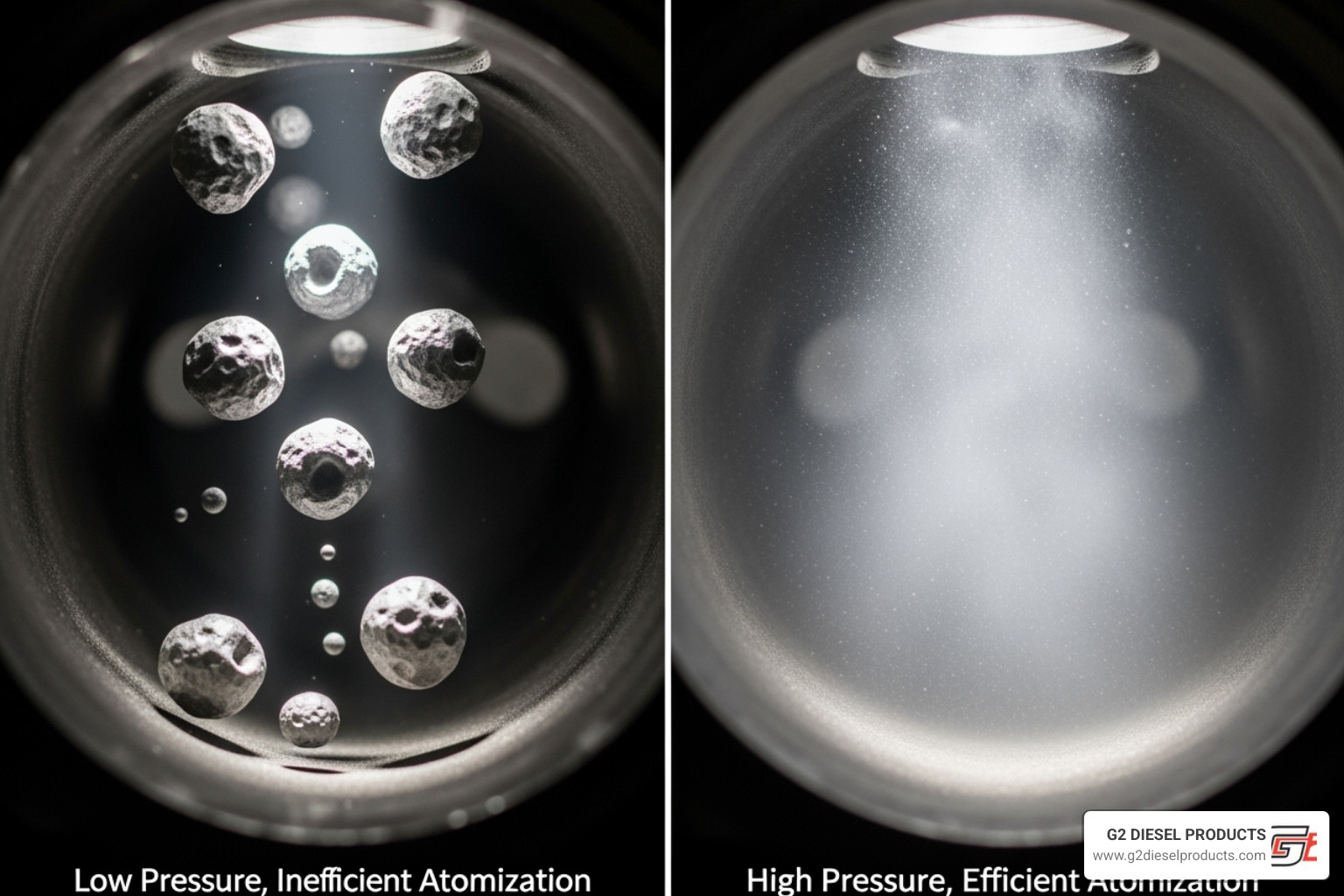
These smaller droplets have more surface area, allowing them to vaporize and mix with air more completely. This leads to more efficient combustion, which wastes less fuel and produces fewer harmful emissions, resulting in significant fuel economy gains. This is why common rail systems excel at burning fuel more efficiently.
Advanced Injection Strategies for a Cleaner, Quieter Engine
Perhaps the most sophisticated feature of diesel engine common rail systems is the ability to perform multiple injections per engine cycle. This gives engineers incredible flexibility to optimize for power, economy, and emissions.
- Pilot Injection: A small, preliminary injection that smooths out combustion, dramatically reducing the "diesel clatter" noise.
- Main Injection: Delivers the bulk of the fuel to create power and torque, with timing and quantity precisely calculated by the ECU.
- Post-Injection: Occurs after the main event to burn off soot particles, helping the diesel particulate filter (DPF) function correctly and meet strict emissions standards.
This multi-injection capability is what makes modern diesel engines powerful, quiet, clean, and efficient.
A Brief History of the Common Rail Revolution
The concept of a diesel engine common rail is surprisingly old, but its modern electronic form is a product of the late 20th century, driven by the need for cleaner, more efficient engines.
The Pioneers and Mass Production
While early mechanical common rail systems existed in marine engines as far back as the 1910s, the breakthrough for automotive use came in response to tightening emissions regulations in the 1980s and 90s. Old mechanical systems simply couldn't meet the new standards.
Development of electronic systems accelerated, with companies like Magneti Marelli and Fiat leading the way. The Denso Corporation achieved the first commercial success in 1995 on a truck sold in Japan. However, the technology truly went mainstream in 1997 when Robert Bosch GmbH launched it into mass production for passenger cars, starting with the Alfa Romeo 156 JTD and Mercedes-Benz C 220 CDI.
By the early 2000s, common rail had rapidly expanded into heavy-duty trucks and became the dominant technology worldwide. This revolution was driven by the system's clear advantages in performance, efficiency, and emissions control.
Major System Acronyms and Brand Names
As common rail technology became the industry standard, manufacturers created their own brand names and acronyms for it. While the core technology is similar, you'll see various names in the market:
- CDI: Common Rail Direct Injection (Mercedes-Benz)
- CRD/CRDi: Common Rail Diesel/Direct Injection (Chrysler, Hyundai, Kia)
- dCi: Diesel Common Rail Injection (Renault, Nissan)
- D-4D: Direct Injection 4-stroke Diesel (Toyota)
- HDi: High Pressure Direct Injection (PSA Group - Peugeot, Citroën)
- JTD: Jet Turbo Diesel (Fiat Group)
- TDI: Turbocharged Direct Injection (Volkswagen Group)
- TDCI: Turbo Diesel Common Rail Injection (Ford)
Understanding these different systems is crucial for anyone working with modern commercial vehicles. Our guide on Truck Fuel Systems provides more detail on specific applications.
Maintaining Your Diesel Engine Common Rail System for Peak Performance
A diesel engine common rail system is a precision instrument. The high pressures and tight tolerances that deliver its performance also make it sensitive to contamination and neglect. For fleet managers, proper maintenance is key to protecting this investment and ensuring long-term reliability for your Volvo, Mack, Kenworth, and Paccar trucks.
Common Issues and Challenges with a Diesel Engine Common Rail
The biggest enemy of any common rail system is contamination. Internal clearances are measured in microns, so even microscopic impurities can cause catastrophic damage.
- Fuel Contamination: Water and debris are the primary culprits. Water causes corrosion and reduces lubricity, while dirt and metal particles act like sandpaper, wearing down precision components. Accidental contamination with DEF (Diesel Exhaust Fluid) is especially destructive and can ruin a fuel system in hours.
- Clogged Fuel Filters: A restricted filter starves the pumps of fuel and can eventually allow contaminants to bypass it, leading to expensive damage.
- Injector Wear and Failure: This often appears as rough idle, power loss, increased fuel consumption, or excessive smoke. Internal deposits can cause "stiction," where parts stick together. While a Diesel Fuel Injector Cleaner can help with minor deposits, significant wear requires replacement.
- High-Pressure Pump Failure: Often the most expensive repair, pump failure can spread metal debris throughout the entire fuel system, damaging every component downstream.
- Sensor Malfunctions: A faulty rail pressure sensor can feed bad data to the ECU, leading to poor performance and potential engine damage.
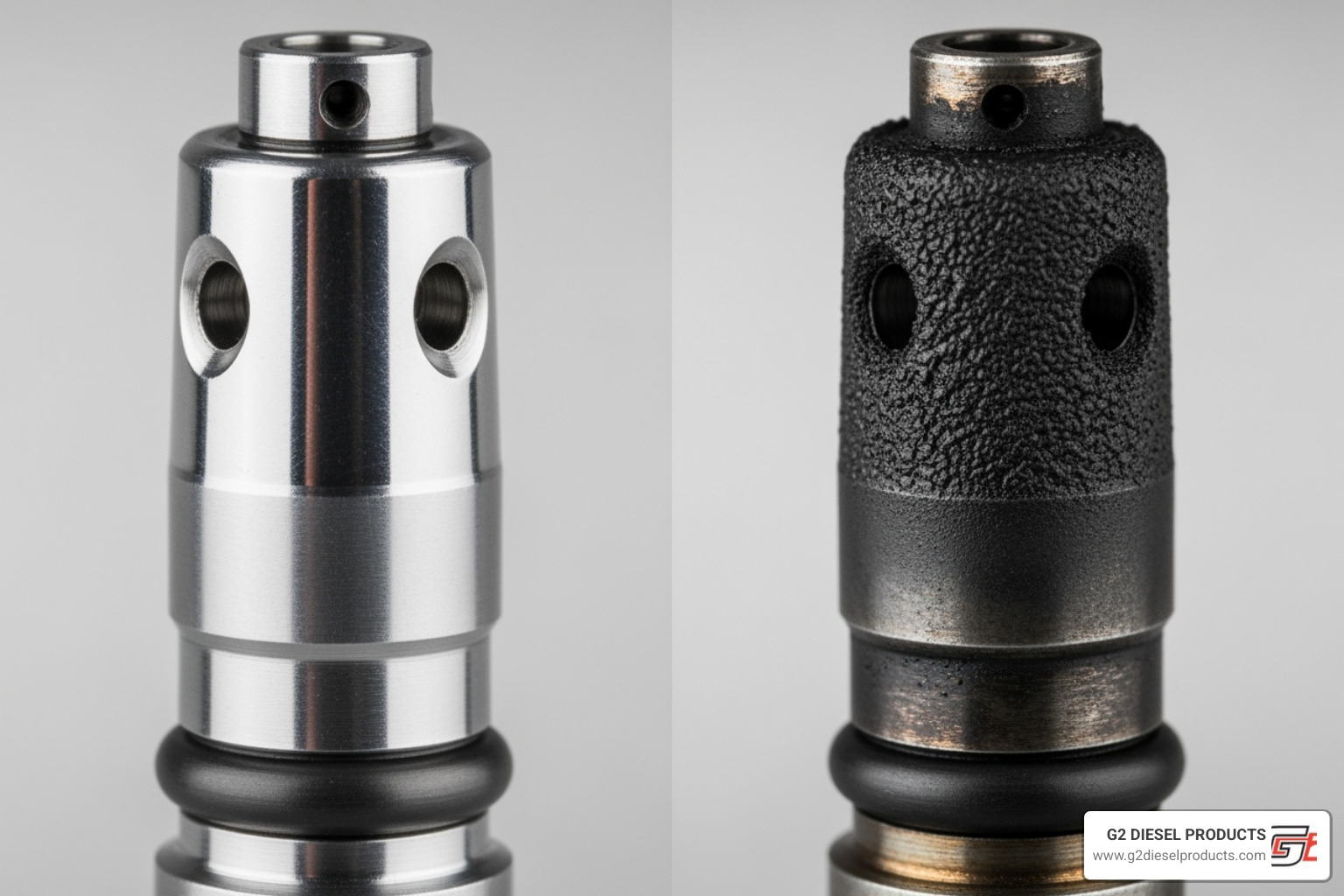
Best Practices for Diesel Engine Common Rail Longevity
Fortunately, most common rail problems are preventable. A small investment in prevention can save thousands in repairs.
- Use High-Quality Fuel: Purchase diesel from reputable, high-volume suppliers to avoid contaminated fuel.
- Replace Fuel Filters Regularly: This is non-negotiable. Use high-quality filters with the correct micron rating and follow the manufacturer's service intervals religiously.
- Maintain Clean Servicing Procedures: Any work on the fuel system must be done in a clean environment to prevent dirt from entering the system.
- Use Correct Engine Oil: The right oil is crucial for lubricating certain fuel system components.
- Seek Professional Diagnostics: Common rail systems require specialized tools and expertise. Services like How to Check Common Rail Injectors and Diesel Injector Testing Services can identify issues accurately.
- Address Issues Promptly: Don't ignore warning signs like rough running or check engine lights. Small problems in these systems can escalate quickly.
Frequently Asked Questions about Common Rail Technology
Here are answers to some of the most common questions fleet managers and technicians have about diesel engine common rail systems.
What are the main signs of a failing common rail injector?
A failing injector will give you clear warning signs. Look for:
- Rough Idle: The engine may shake or vibrate, indicating uneven fuel delivery.
- Misfiring and Power Loss: The engine may stumble during acceleration or feel sluggish under load.
- Increased Fuel Consumption: Inefficient combustion from a bad injector wastes fuel.
- Excessive Exhaust Smoke: Black smoke often means too much fuel, while white smoke can indicate unburnt fuel from a leaking injector.
- Engine Knocking: A sharp, metallic sound can point to incorrect injection timing.
- Hard Starting: The engine may struggle to start or fail to start at all.
- Check Engine Light: The ECU will often store trouble codes related to fuel pressure or injector circuits.
How do piezoelectric injectors differ from solenoid injectors?
While both are electronically controlled, their mechanism and performance differ. Solenoid injectors use an electromagnet to move a plunger, which is a robust and reliable design.
Piezoelectric injectors use a stack of special crystals that expand almost instantly when voltage is applied. This makes them significantly faster and more precise than solenoids. This speed allows for more complex injection strategies (e.g., more injections per cycle), which translates to better fuel atomization, lower emissions, and quieter operation. While more expensive, their superior performance is why they are common in modern diesel engine common rail systems.
Can you upgrade an older diesel engine to a common rail system?
While technically possible in some custom applications, it is not practical or cost-effective for most commercial vehicles.
The conversion is incredibly complex and expensive. It would require a new high-pressure pump, a common rail, new electronic injectors, a sophisticated ECU, numerous sensors, and extensive modifications to the engine block and cylinder head. The cost of the parts, labor, and custom software calibration would likely exceed the value of the engine itself. It is far more sensible to maintain your existing common rail system with high-quality components or invest in a newer vehicle designed with the technology from the factory.
Conclusion: The Standard for Modern Diesel Power
The diesel engine common rail revolution has redefined diesel power, evolving it into a sophisticated system of pressure, precision, and performance. Modern systems operate at immense pressures up to 36,000 psi, delivering fuel with microscopic accuracy.
This technology is the reason today's trucks deliver up to 25% more torque, achieve greater fuel economy, and meet strict emissions standards, all while running quieter than ever before. For fleet managers of Volvo, Mack, Kenworth, and Paccar trucks, common rail technology means reliability and efficiency that directly impact your bottom line.
However, this level of sophistication demands high-quality components. The extreme pressures and tight tolerances mean that inferior parts, especially fuel injectors, can lead to costly failures. At G2 Diesel Products, we understand what these advanced systems require. Our high-performance common rail injectors are engineered to excel in the demanding world of heavy-duty trucking.
The future of diesel is tied to the continued evolution of common rail technology. By choosing quality components and following proper maintenance, you are investing in your fleet's long-term performance and profitability.
Your trucks deserve components that match their advanced engineering. Explore our high-performance common rail injectors for Volvo, Mack, and Paccar engines and find the difference quality makes.
